A close look at the Color Rendering Index (CRI, or Ra)
Posted by Marcel van der Steen in ExplanationTags: light Add comments
 This article looks in detail at the CRI. What is meant with it, is it a good measure, what does it mean in practical terms and how is the relation with LEDs that are penetrating the market more and more?
This article looks in detail at the CRI. What is meant with it, is it a good measure, what does it mean in practical terms and how is the relation with LEDs that are penetrating the market more and more?
These are a number of questions that will be dealt with, in this article, in a very practical way.
CRI and the significance
The CRI is an index, a measure, that tells something about how colors are represented by light coming from a certain light bulb, compared to how the colors are rendered with the light coming from a reference illuminant.
The CRI reports a unit less value, that can differ between 0 and 100. The value 100 means that there is no difference in color rendition between the light of the observed light bulb and the light of the reference illuminant.
Depending on the color temperature of the observed light bulb the reference illuminant is sun light (when the color temperature is > 5000 K), or the reference illuminant is a black radiator (color temperature < 5000 K). The computation of the index is given in a publication, the CIE 13.3-1995; 8 colors are taken that are illuminated by the observed light bulb and by the reference illuminant. Then the difference in color rendition for these 8 colors is computed. The average for all these colors is the CRI index.
Reference colors (TCS = test color samples) that are used (source Wiki CRI).
The colors used are matte (not bright) and possibly the reason for this is that they contain each a big part of all colors in the complete light spectrum (that ranges from 380 nm to 780 nm).
What does that mean in practice?
A number of examples can help here.
Illumination of the same object with light with different CRI (source site)
Observing the results in this photo the scene lighted with light with a CRI of 90 is much more vivid (the colors are at least) than when lighted with light with CRI of 50. However a light bulb with light with a certain CRI is not always equal to light from an other light bulb with a certain CRI.
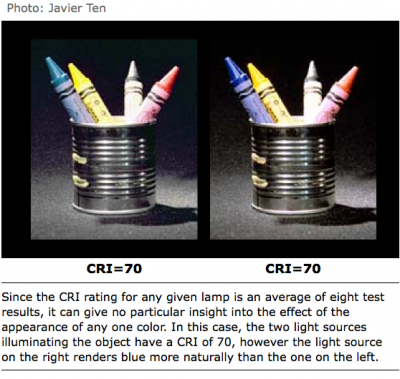
The color blue is different when illuminated with light of the same CRI value (source)
Different light spectra having the same CRI
The reason for the differences in color rendition when objects are illuminated with light with the same CRI, can be explained when looking at the spectrum of the light used; white light coming from an illuminant can be seen as the sum of a lot of single color light rays. The spectrum of the light indicates how much of what single light color (where one monochromatic color corresponds to light with one single wavelength).

The spectrum of light from a Tube Light, with a CRI value of 80
The image shows the spectrum of the light of a Tube Light. It shows a lot of orange content (610 nm), a lot of green at about 545 nm and some blue at 435 nm. There is very little red and little blue-green (at 520 nm). This tube cannot be used to correctly render the color of objects having this exact color since the illuminant does not have light in this wavelength that can be reflected by the object so that others see this object with its specific color. So the object will then be black in this light. Fortunately, objects almost never have a monochromatic color but rather have colors that are a mix of the monochromatic colors (a set of colors with range of wavelengths). This means that some monochromatic parts of the object’s color can be well rendered by the illuminant’s light (where the light has these colors in its white color available) and some others cannot. So it might be that an object with a color of the range of reds, might be rendered with a mixture of light with 545 nm and 485 nm (which is well present in the light of the illuminant).
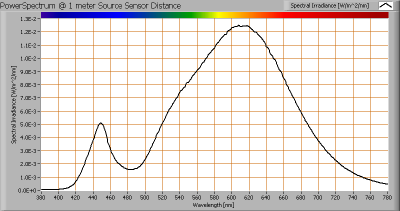
Spectrum of an LED light bulb, with a CRI of 81
The spectrum of an LED light bulb emitting warm white light (it has a big bump at yellow-orange light range and a comparable small peak at blue). So there is a lot of yellow-orange light, quite some red, and a lot of green around 610 nm. And there is considerable blue at 450 nm. There is a little of blue at 490 nm.
An object with a color centered at 520 nm (it will be a range of monochromatic colors around this wavelength) will be rendered more naturally with this LED light bulb than with the tube light.
Is the value 100 a good value?
It is not said that a value of 100 is good. A value of 100 means that the color rendition of an observed light bulb is the same as that of a reference illuminant, and that for the 8 reference colors (the 8 TCS, test color samples as earlier mentioned).
A report done by ASSIST shows a comparison result where people expressed their preference for color rendition of sources emitting light with low CRI value. Even the light of an incandescent light bulb with a CRI of 100 was not preferred.
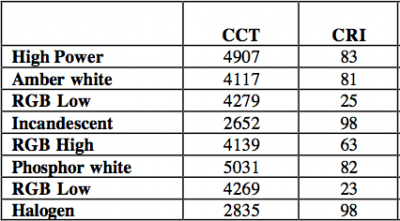
The compared light bulbs with their CRI value
The test panel’s preference of the color rendition of the evaluated light bulbs
Is the comparison index a good one?
There is criticism on the CRI value. The Wiki site reports a number of these, among which:
- There are only 8 reference colors and it is too easy to optimize for only these. More reference colors are needed.
- The CRI value is an avergae of the single CRI result of each of the 8 TCS. A color with a big difference can be compensated by good results for the others. When an effective (RMS) value is used, then big differences are weighted more in the end-result.
- The TCS are all matte. Use some bright colors as well, and colors occurring often in nature (skin color of western man, skin color of Asiatic man, olive green of leaves).
- Use a different reference than the currently used reference illuminant (for color temperatures below 5000 K), see also explanation in previous paragraph.
Despite the intelligent computing method needed to get the CRI result, there are quite big effects on the CRI value when only small differences in the spectrum occur.
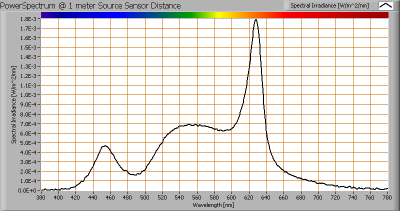
Spectrum of light with a color temperature of 3084 K and CRI = 94
Spectrum of light with a color temperature of 3076 K and CRI = 83
Spectrum of light with a color temperature of 3019 K and CRI = 88
So small differences in peak values (look where the blue peak is located) result in a diference in CRI with more than 6 points. These small differences in peak values do not lead to a big change in psychologically perceived difference in color.
The norm used for a minimum indoor CRI value is 80. However a value of 75 cannot be rejected when looking at the practical experience above.
So there is room for improvement in the CRI calculation than the one currently used with the 8 TCS.
CRI and led light bulbs
A technical report of the CIE is available that deals with this item. CIE is a well respected international committee/authority aimed at the science of light sources. They stimulate the exchange between countries on their knowledge and experience on lighting subjects (39 countries participate) and do a lot of research themselves. They publish standards and reports on all kinds of light related matters.
The technical report mentioned here is the CIE 177:2007 report: Color Rendering of White Led Light Sources. A technical committee (TC 1-62) of the CIE explains about three carefully conducted visual experiments (including simulations done) where the CRI of led light bulbs is compared to the visual perception of humans. The following experiments were observed:
- A color simulator on the Hiroshima City University (Japan)
- CRI simulations done by the National Institute of Standards and Technology (NIST, USA)
- Visual CRI experiments at the University of Pannonia (Veszprém, Hungary)
As stated before, the CRI indicates how well color impressions from the light of an observed illuminant correspond to the color impressions of the light of a reference illuminant; a low value indicates a big difference.
The result of the three investigations show that there is a low to no correlation at all between the computed CRI and the visually determined differences in color. The TC comes to the following remark:
the CIE CRI is in general not applicable for a ranking on color rendition when white led sources are part of the observed illuminants.
The conclusion of the TC is a recommendation to develop a new color rendition index (or maybe a set of CRIs). In the beginning existing in parallel to the current one (which needs to give information obout the color comparison. Also this new CRI needs to be valid for all kinds of light sources.
Conclusions
The CRI value determined for the light of every light source, is not always fulfilling its purpose to show the perceived difference in color compared with a reference illuminant; for white LEDs the computed CRI values do not correspond to the visually perceived differences.
The CRI value is depending considerably on small spectral differences which are not likely to result in relevant perceived color differences.
A value of 100 does not mean that humans experience the color rendition as preferred; some investigations show the opposite or show no correlation. It therefore remains perfectly possible to use light sources with low (<< 80) CRI for applications requiring good or at least pleasant color rendition.
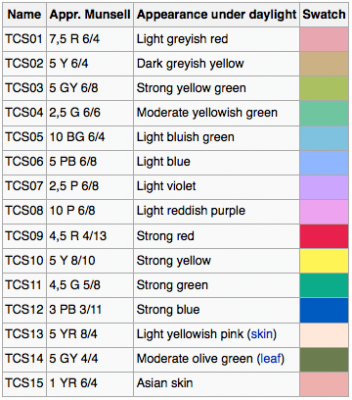
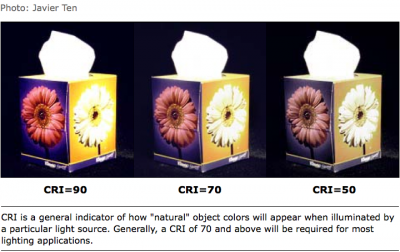
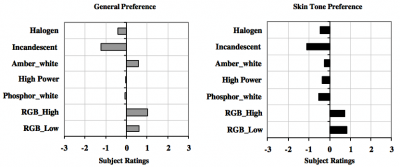
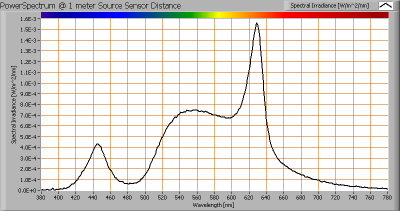
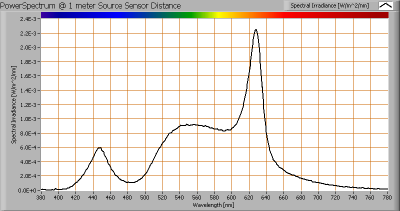



December 31st, 2011 at 2:25 am
This is great information! Thanks for the write-up.
November 20th, 2012 at 9:56 am
This is fantastic. We are in the midst of a critical struggle with the utilities over CRI, and you’ve presented our case in tremendous scientific detail. Thanks!
November 26th, 2015 at 12:09 am
1. how colors are “represensted”
2. rendition for these 8 colors is “computer.”
4. they contain “eac” a big part
5. this “led” light bulb
November 26th, 2015 at 12:58 am
@ Dale Kim. 1, 2, 4, 5 corrected. Thanks. You also have 3.?
April 20th, 2017 at 5:12 pm
What is the average CRI for all lights
April 21st, 2017 at 4:43 pm
Thanks for the explanation, that was useful! If you are into visuals, that one has also helped me https://www.youtube.com/watch?v=AKtMRQ1qnhU
January 23rd, 2018 at 2:40 am
Great overview of CRI! Detailed analysis of the individual TCS values are available here: https://www.waveformlighting.com/tech/cri-ra-test-color-samples-tcs
January 11th, 2019 at 5:37 pm
@ 8, what do you mean with “Are you positive in regards to
the source?”